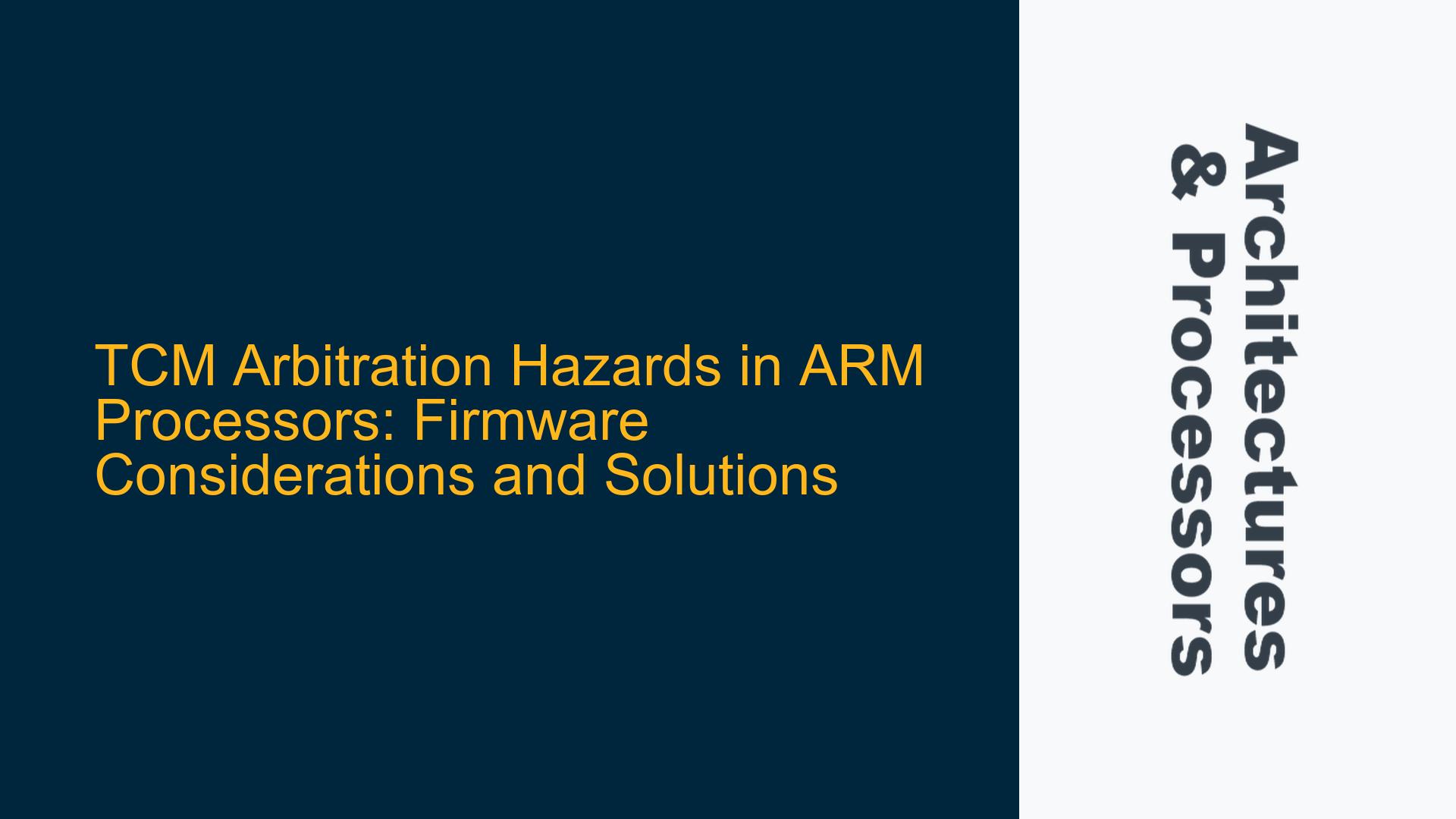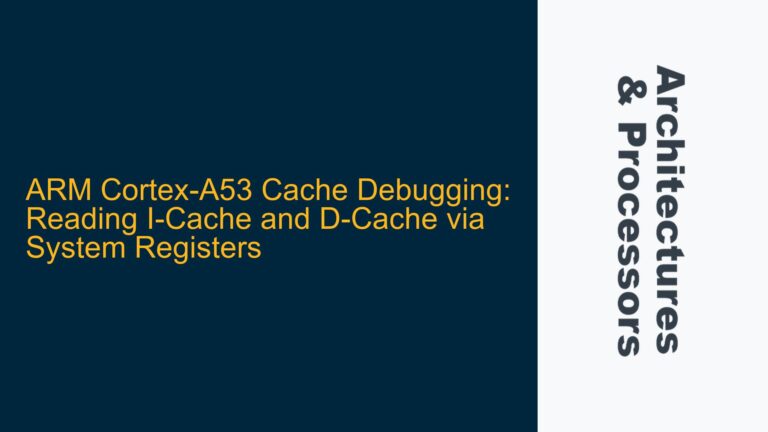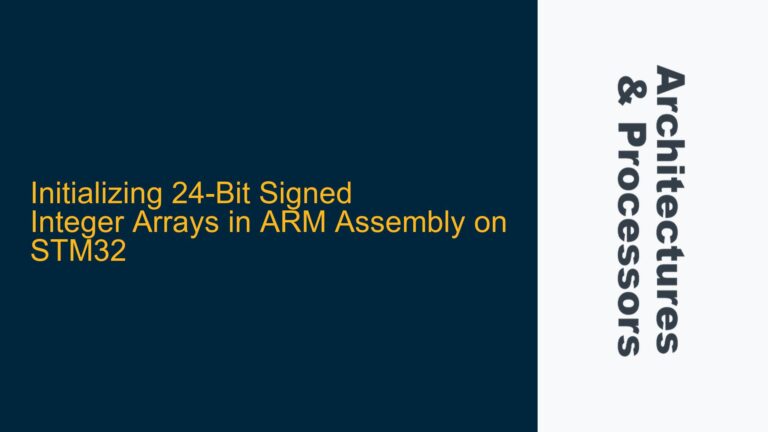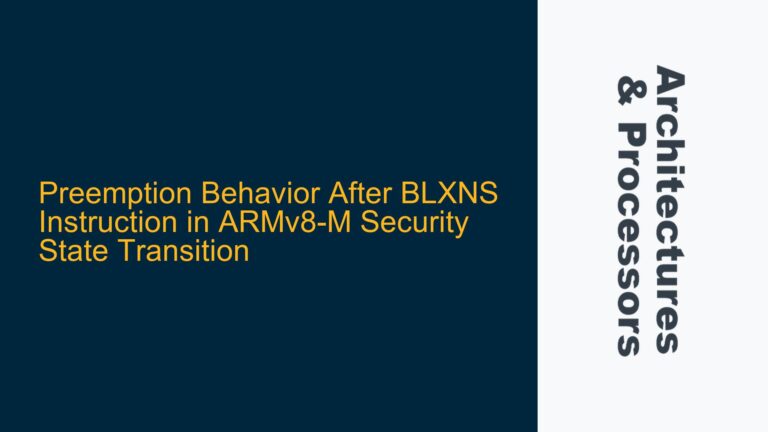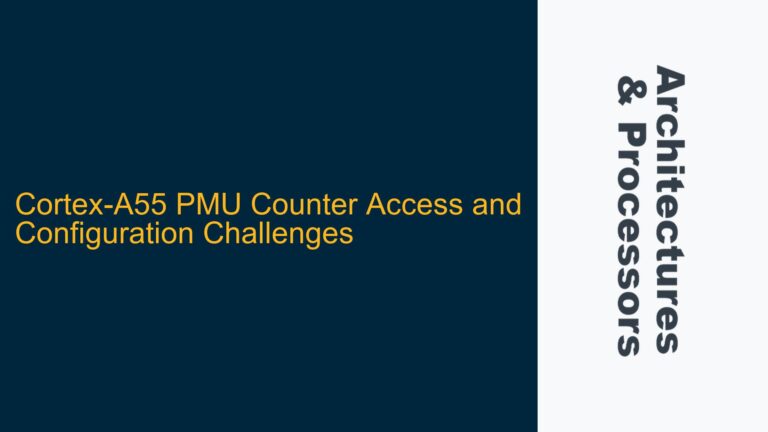TCM Arbitration Hazards During Read-Modify-Write Operations
Tightly Coupled Memory (TCM) in ARM processors is designed to provide low-latency, high-bandwidth memory access for critical code and data. However, the arbitration mechanism governing access to TCM ports can introduce subtle hazards, particularly during read-modify-write (RMW) operations. These hazards arise due to the prioritization of access requests from different subsystems, such as the Load-Store Unit (LSU), Prefetch Unit (PFU), and AXI slave interface. According to the ARM architecture specification (ARM DDI 0460D, section 8.4.4), the LSU typically has the highest priority, followed by the PFU, with the AXI slave interface having the lowest priority. When a higher-priority device accesses a TCM port, lower-priority devices must stall. During RMW operations, additional stall cycles are introduced to resolve internal data hazards, which can lead to unexpected performance bottlenecks and timing issues in firmware.
The core issue lies in the interaction between the LSU and AXI slave interface during RMW operations. When either the LSU or AXI slave performs an RMW operation, the TCM port must ensure atomicity and consistency, which requires additional arbitration cycles. These cycles can disrupt the expected timing of memory accesses, particularly in real-time systems where deterministic behavior is critical. The firmware must account for these hazards to avoid race conditions, data corruption, and performance degradation.
Memory Access Prioritization and RMW-Induced Stall Cycles
The primary cause of TCM arbitration hazards is the prioritization scheme and the inherent complexity of RMW operations. The LSU, responsible for load and store operations, is given the highest priority to ensure that CPU instructions are executed with minimal latency. The PFU, which handles instruction prefetching, has the next highest priority, while the AXI slave interface, used for external memory access, has the lowest priority. This prioritization ensures that critical CPU operations are not delayed by less time-sensitive tasks.
However, RMW operations complicate this scheme. An RMW operation involves three steps: reading a value from memory, modifying it, and writing it back. During this process, the TCM port must ensure that no other device modifies the same memory location, which requires additional arbitration and stall cycles. These cycles are introduced to prevent data hazards, such as read-after-write (RAW) or write-after-read (WAR) conflicts, which can occur if the LSU and AXI slave interface attempt to access the same TCM location simultaneously.
The stall cycles introduced during RMW operations can vary depending on the specific ARM core and TCM implementation. For example, in some ARM Cortex-M4 processors, the additional stall cycles can range from 2 to 5 cycles per RMW operation. This variability makes it challenging to predict the exact impact on firmware performance, particularly in systems with tight timing constraints.
Another contributing factor is the lack of explicit memory barriers or cache management instructions in the firmware. Without proper synchronization, the firmware may assume that memory accesses will complete within a predictable number of cycles, leading to incorrect assumptions about timing and potential race conditions. This is especially problematic in multi-threaded or interrupt-driven systems, where concurrent access to TCM can exacerbate arbitration hazards.
Implementing Firmware-Level Synchronization and Optimization
To mitigate TCM arbitration hazards, firmware developers must implement synchronization mechanisms and optimize memory access patterns. The following steps provide a comprehensive approach to addressing these issues:
1. Use Data Synchronization Barriers (DSB) and Instruction Synchronization Barriers (ISB)
Data Synchronization Barriers (DSB) and Instruction Synchronization Barriers (ISB) are essential for ensuring that memory operations complete in the correct order. A DSB instruction ensures that all memory accesses before the barrier are completed before any subsequent accesses begin. This is particularly important during RMW operations, where atomicity must be maintained. An ISB instruction ensures that the pipeline is flushed, preventing any out-of-order execution that could lead to data hazards.
For example, consider a scenario where the firmware performs an RMW operation on a TCM location shared between the LSU and AXI slave interface. Inserting a DSB instruction before and after the RMW operation ensures that the operation completes atomically, preventing concurrent access from other devices.
LDR R0, [R1] ; Load value from TCM
ADD R0, R0, #1 ; Modify value
DSB ; Ensure previous operations complete
STR R0, [R1] ; Store modified value back to TCM
DSB ; Ensure store operation completes
2. Optimize Memory Access Patterns
Firmware should minimize the frequency of RMW operations and prioritize sequential memory accesses. Sequential accesses are less likely to trigger arbitration hazards, as they do not require the same level of atomicity as RMW operations. Additionally, grouping related memory accesses together can reduce the number of arbitration cycles, improving overall performance.
For example, instead of performing multiple RMW operations on individual TCM locations, the firmware can use a temporary buffer to accumulate modifications and write them back in a single operation. This approach reduces the number of arbitration cycles and minimizes the risk of data hazards.
3. Configure TCM Priority and Arbitration Settings
Some ARM processors allow firmware to configure the priority and arbitration settings for TCM ports. By adjusting these settings, developers can tailor the arbitration behavior to the specific requirements of their application. For example, increasing the priority of the AXI slave interface during critical external memory accesses can reduce stall cycles and improve performance.
The exact configuration options depend on the specific ARM core and TCM implementation. Developers should consult the processor’s technical reference manual for details on available settings and their impact on arbitration behavior.
4. Monitor and Analyze Performance
Firmware developers should use performance monitoring tools to identify and analyze arbitration-related bottlenecks. ARM processors often include Performance Monitoring Units (PMUs) that can track metrics such as stall cycles, memory access latency, and arbitration conflicts. By analyzing these metrics, developers can pinpoint specific areas of the firmware that require optimization.
For example, if the PMU indicates a high number of stall cycles during RMW operations, the firmware can be modified to reduce the frequency of these operations or improve synchronization.
5. Leverage Hardware Features for Atomic Operations
Some ARM processors provide hardware support for atomic operations, such as Load-Exclusive (LDREX) and Store-Exclusive (STREX) instructions. These instructions allow firmware to perform atomic RMW operations without relying on TCM arbitration, reducing the risk of data hazards and stall cycles.
LDREX R0, [R1] ; Load value from TCM (exclusive)
ADD R0, R0, #1 ; Modify value
STREX R2, R0, [R1] ; Store modified value back to TCM (exclusive)
CMP R2, #0 ; Check if store was successful
BNE retry ; Retry if store failed
By implementing these steps, firmware developers can effectively mitigate TCM arbitration hazards and ensure reliable, high-performance operation of ARM-based systems.
